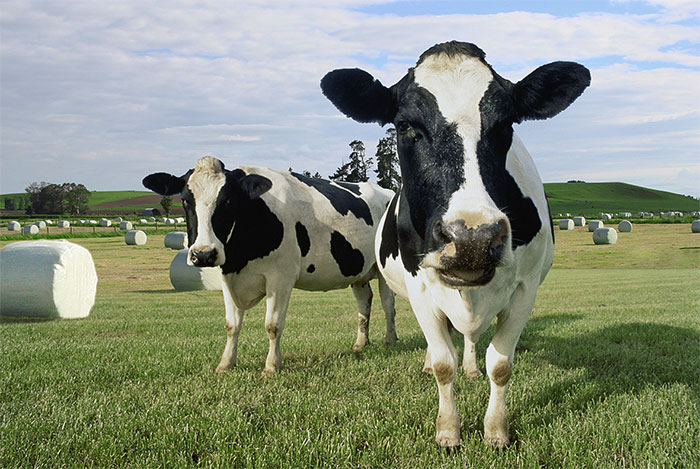
With the silage season underway, two independent surveys carried out across 300 livestock farms in the UK and Sweden reveal silage management practices that can improve the ability of farmers to produce high quality bale silage this season.
The surveys were conducted by the Swedish University of Agricultural Sciences (SLU) in Sweden, and by IBERS Aberystwyth University and Silage Solutions Ltd in collaboration with the Silage Advisory Centre in the UK. They investigated current on-farm silage management practices and identified three main areas needing greater care for achieving better silage quality:
- correct application of film-wrap layers to reduce mould;
- wrapping location preferably at the stacking site versus on the field;
- careful handling of bales to prevent water and oxygen from entering the bales.
“Best practices in silage production are key to making the desired amount of quality grass silage. What is clear from these surveys is that despite many past research initiatives, there is still room for improvement on many farms. At Dow, we are committed to understanding how silage quality can be improved, ensuring that best practices are communicated to the farming community and delivering the best possible raw materials to make high quality films,” said Julia Schlenz from Dow.
Together with partners from the Silage Advisory Centre, Dow for example, hosts farmers at baling best practice events and supports studies that provide insights into how bale silage quality can be improved.
More film layers for improved film seal
Both surveys indicate that the correct application of film-wrap and increasing the number of layers result in improved film seal, thus oxygen is kept out and mould growth is avoided.
In the UK, two thirds of surveyed farmers applied four layers of film, while nearly a third used six layers. Sixty percent of the bales wrapped in four layers had surface mould present, compared to only 34% of the bales wrapped in six layers. On bales where surface mould was present, the amount of mould cover was lower when bales had been wrapped in six layers than when wrapped with only four layers.
In Sweden, farmers generally apply a minimum of eight layers of film. “Sixty-two percent of surveyed farmers used eight layers, while only 17% used less film,” said Rolf Spörndly, research group leader at the SLU. “More layers of film-wrap result in better sealed bales, and we have seen a direct correlation between the higher seal integrity and the absence of total mould content and visible surface mould.”
“A key lesson to take away here is that the correct application of film-wrap and a minimum of six layers of film are crucial to achieve quality silage. Removal of oxygen is so important because the desirable bacteria that promote good silage fermentation thrive in anaerobic conditions, whilst oxygen enables the growth of undesirable microbes such as listeria, yeasts and moulds,” said Dave Davies of Silage Solutions Ltd.
Wrapping location as a pre-cursor to silage quality
In both countries it is general practice for bales to be wrapped in the field as opposed to the stacking site, with 59% in the UK, and 80% in Sweden.
However, the UK survey shows that 60% of the bales wrapped on the harvested field had surface mould – due to physical damage to the film, while this was the case for only 43% of the bales wrapped by the stack. On bales where surface mould was present, bales wrapped in the field had more surface mould cover compared to the ones wrapped by the stack.
“Whenever possible farmers should consider wrapping at the stacking site. However, with the increased popularity of baler/wrapper combinations, it is inevitable that the practice of wrapping on the field will continue. In these situations, every effort should be made to cart bales on harvest day and to ensure that any physical damage to the film is avoided,” said Rhun Fychan, research scientist at IBERS.
Careful handling of bales
While it may be difficult to reverse the trend for field wrapping of bales, the results from both surveys emphasize the importance of rapid and careful removal of bales when moving from the field to the stacking site and that handling should be minimal.
Bales wrapped in the harvested field are at greater risk of physical damage to the film-wrap than those that are wrapped by the stack. This damage can be caused during tipping bales off the wrapper, handling on and off trailers, and punctures from birds and pests.
“We noticed that bale integrity is best preserved if they leave the bale standing up, instead of rolling them out on the field. The top side of the bale has more film layers than the flat side, providing an increased barrier against physical damage to the film-wrap,” adds Spörndly. “This is an uncommon practice in the UK but relatively popular in other European countries,” said Davies.
